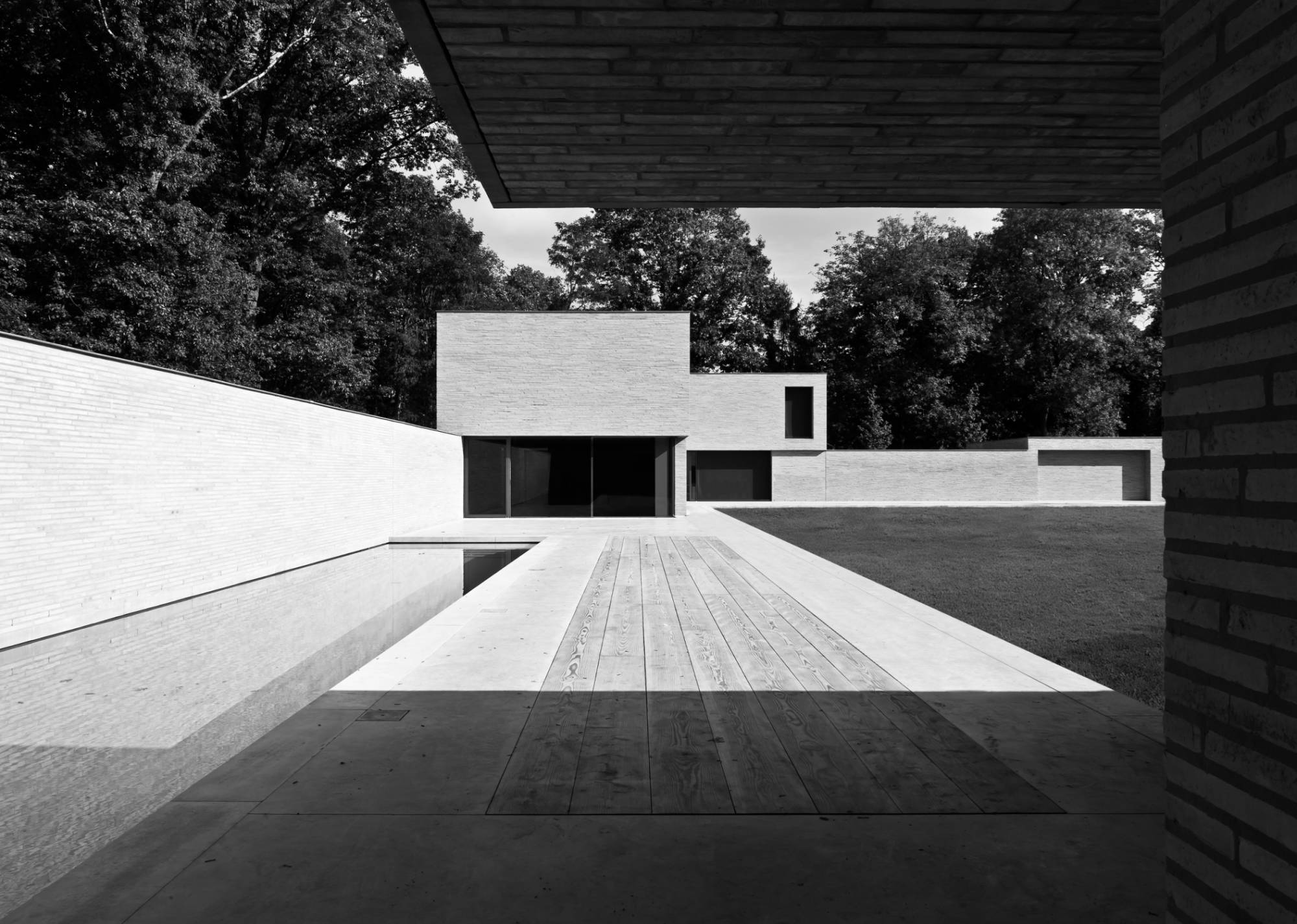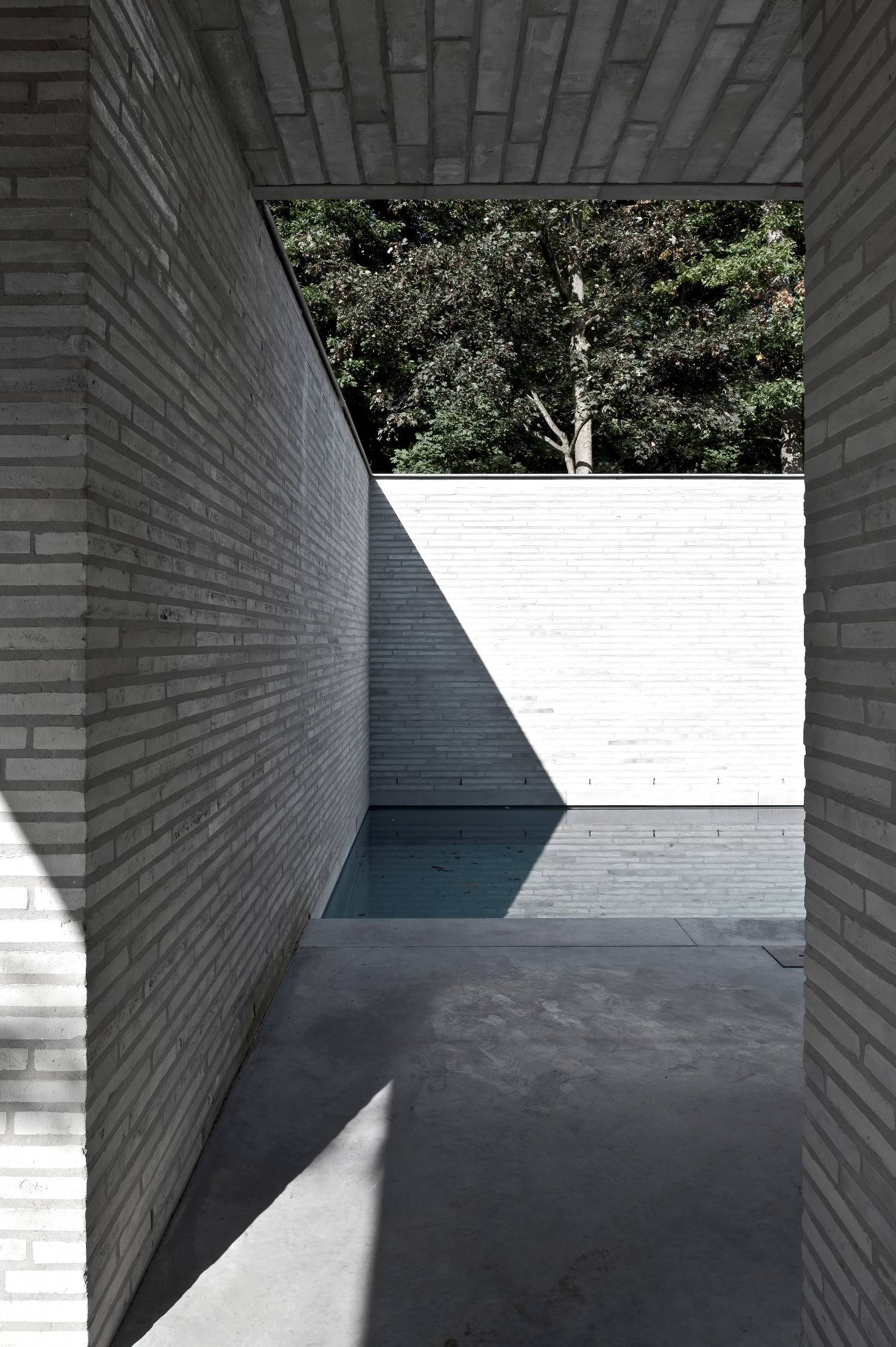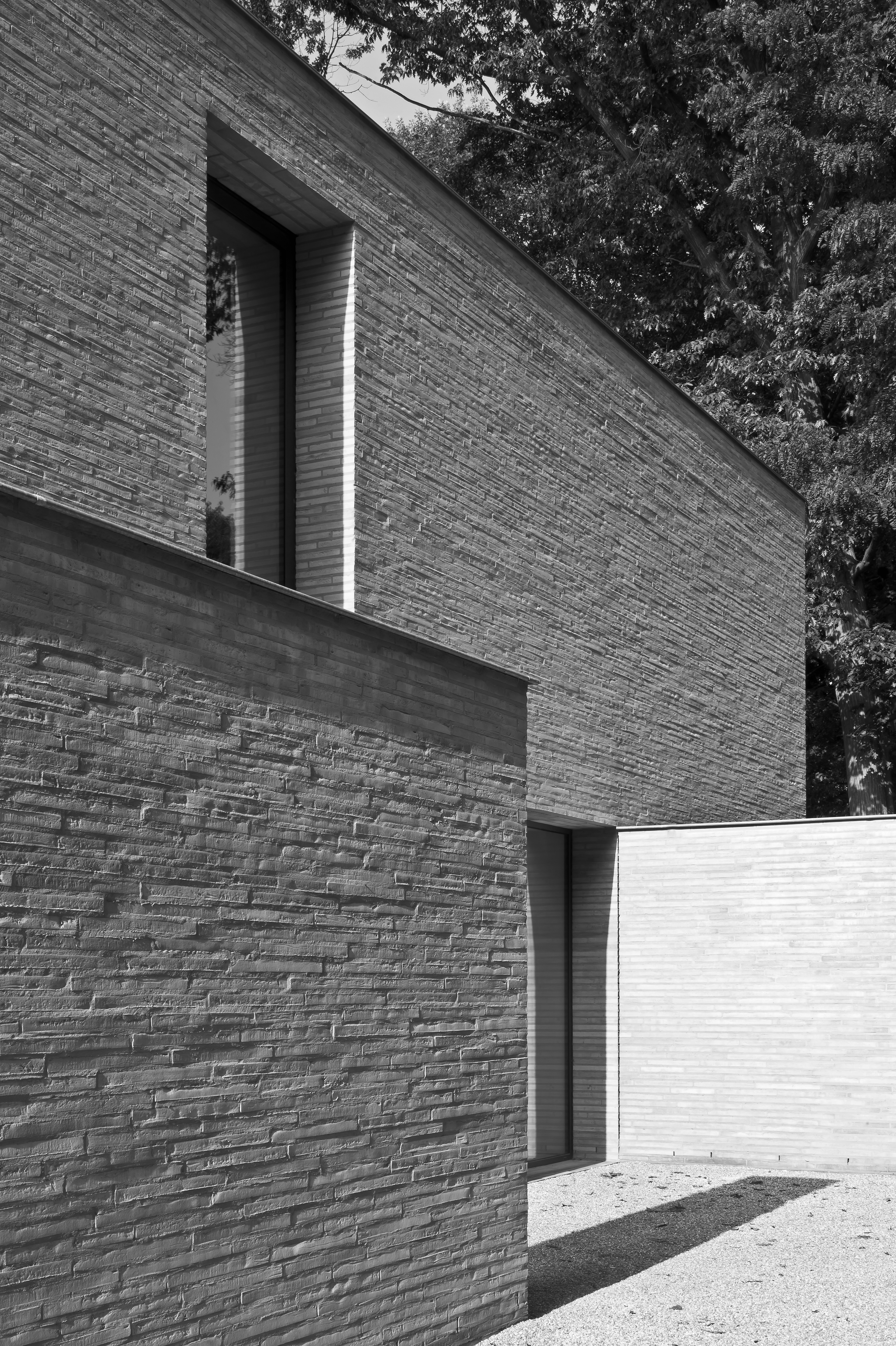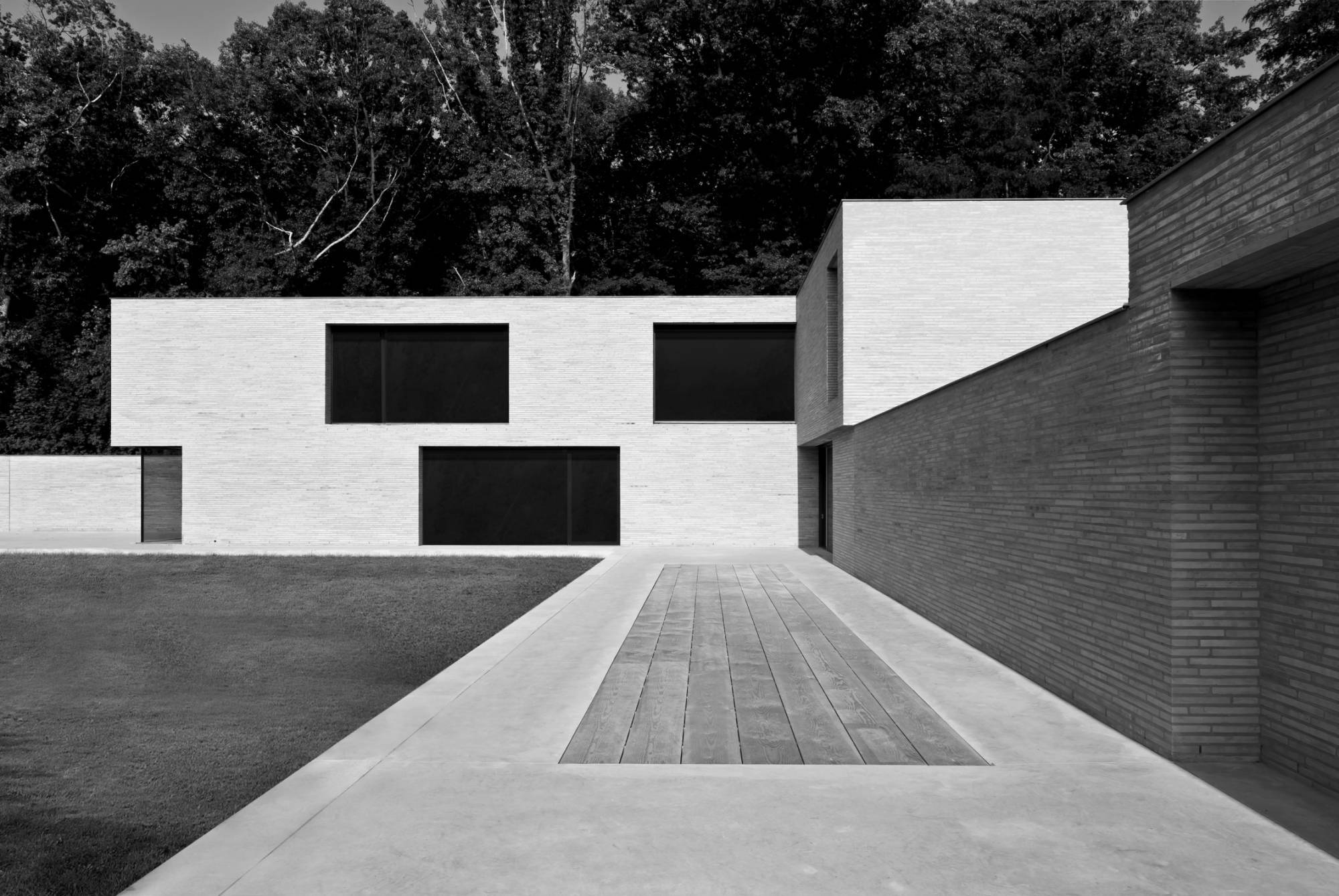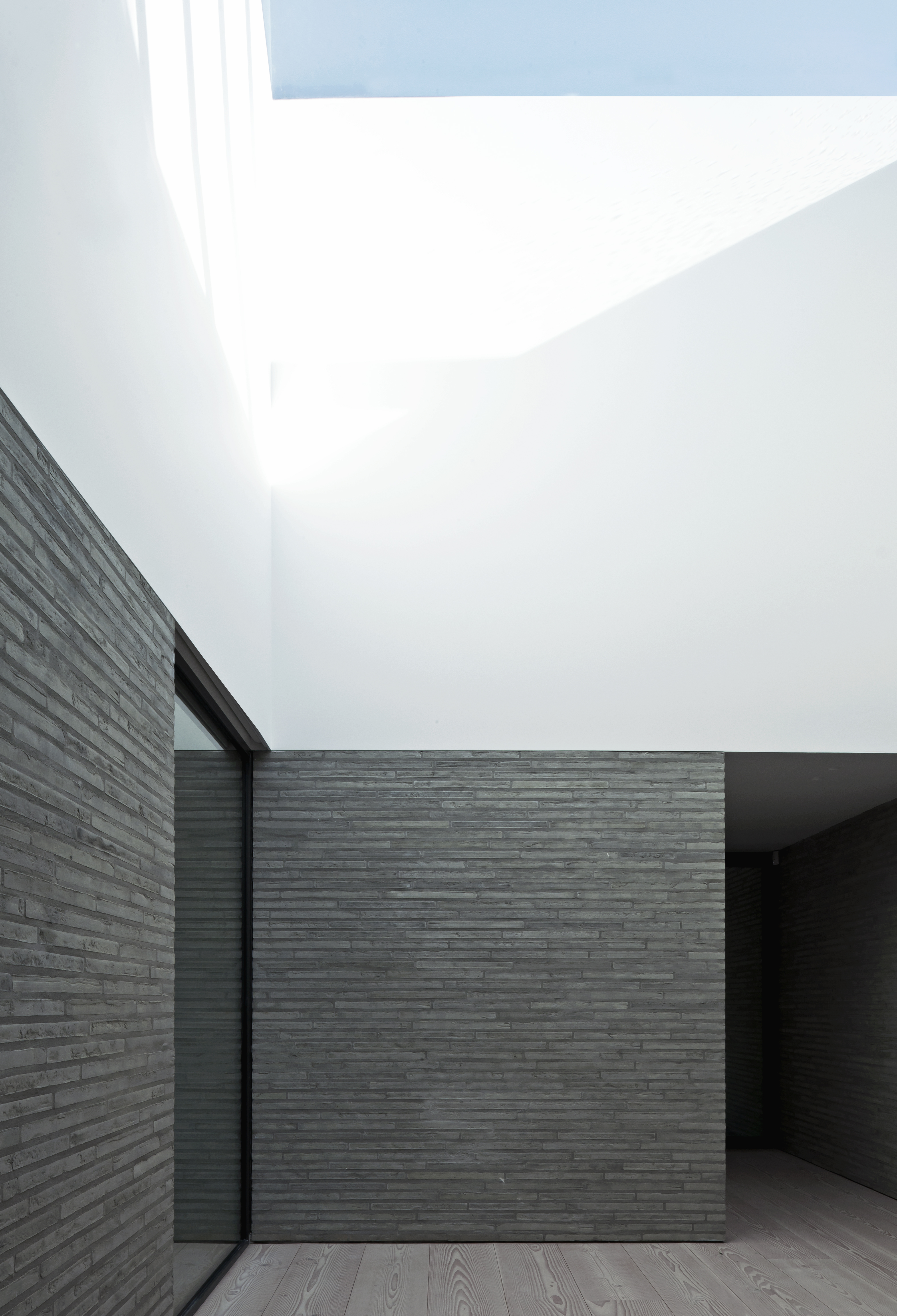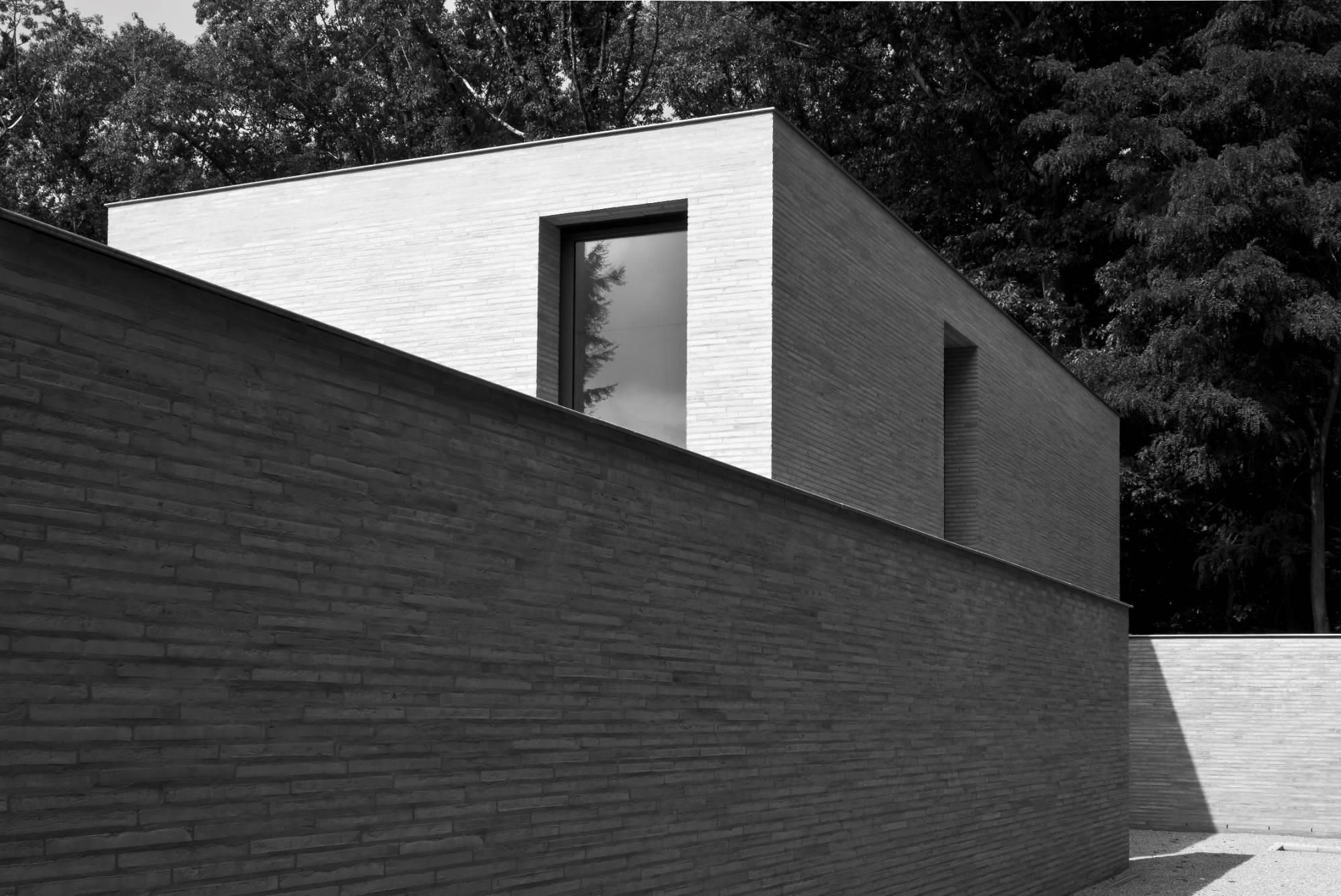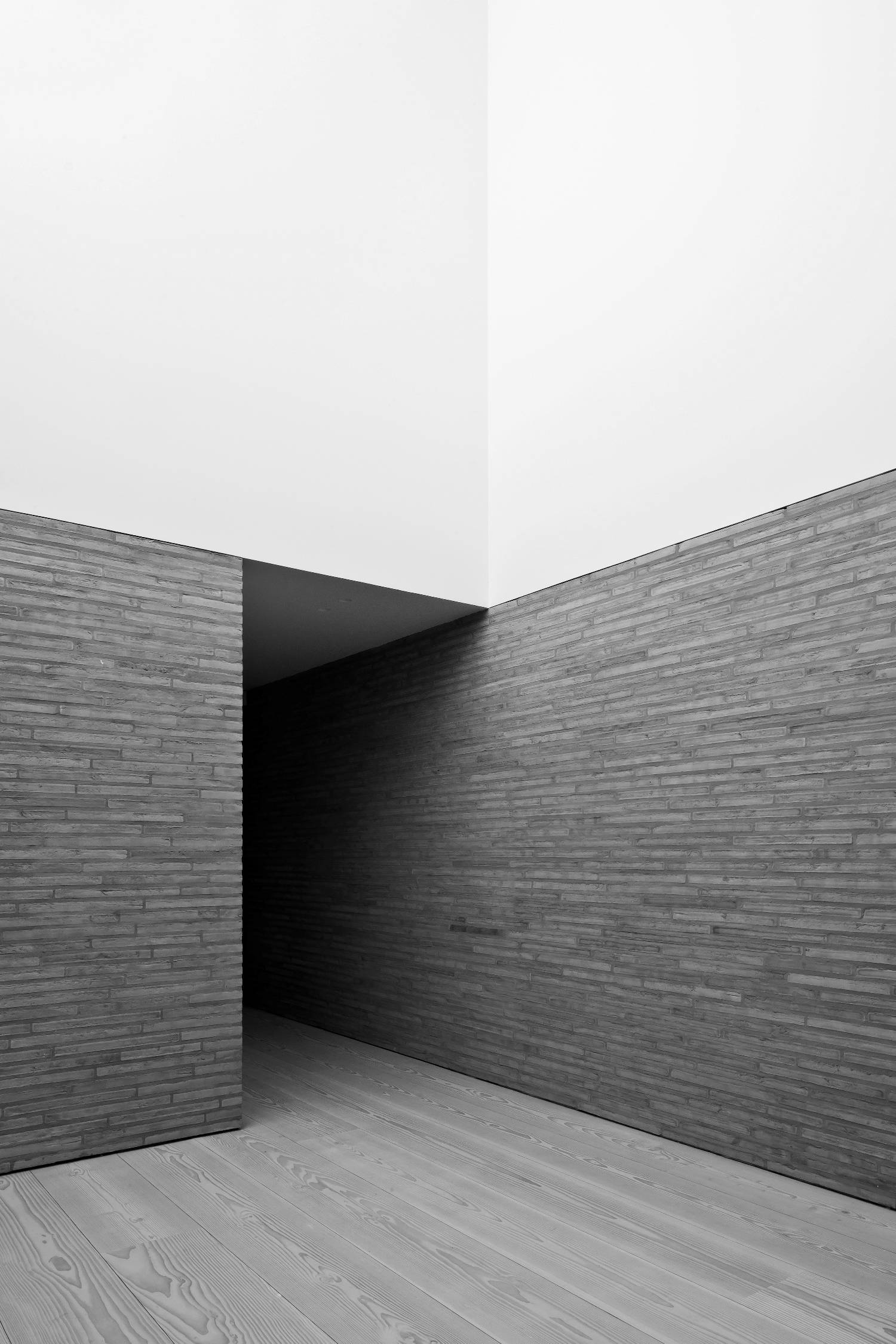VM Residence
Sint-Martens-Latem, Belgium
2010
The spatial and design concept of this house, built in the green surroundings of the Belgian city of Sint-Martens-Latem, was strongly influenced by the particularities of the site, the functional program and the local urban regulations. The terrain was a combination of two plots with defined building areas. Set in a low-density urban settlement of villas, the terrain has a very strong natural character, surrounded by dense gardens, forest and narrow streets lined by old and beautiful ash, oak and maple trees. The site is protected by a curtain of high trees on its north and east sides, and by dense green hedges to the southwest, creating a strong sense of shelter and natural enclosure.
The main volume is located at the corner of the site, opening the internal spaces to the southern light and views and, at the same time, shielding the private garden from the adjacent streets. The architectural expression is defined by long brick walls and stacked volumes, following the main two borders of the site, emphasizing the sense of shelter yet embracing the landscape, making it part of the architectural concept. These long walls, built in elegant and narrow grey brickwork, accentuate the relationship of the house with the garden, defining the outdoor spaces and garden areas as if they were a physical extension of the internal spaces. The scale of these elements emphasizes the idea that the main living area and the garden are part of a single extended livable space, where architecture and landscape blend together.
The main entrance is located at the northerneastern corner of the site, where a patio garden leads under the cantilevered first-floor volume. Internally the house is organized in two main directions, on both levels. On the ground floor, public areas flow around the main hall, which is double height and has a glazed roof, creating the sense of one continuous and dynamic space with multiple points of view towards the garden. The main living zones have a strong relation with the outside through wide glass surfaces and sliding windows. The sunken living room, below the general floor level, offers a singular perspective of the natural and built landscape, with the garden, swimming pool and covered outdoor terrace acting as background. Above, in a more private atmosphere, the residents continue the close dialogue with the outside panoramas through large openings that flood the main circulation areas and the private rooms with southern light.
The dialogue between mass and void defines the character and atmosphere of the project, not only in plan but also in the façade and the three-dimensional composition. The extended and textured brick volumes are interchanged with large openings according to the different internal spaces, making a balanced arrangement of architectural elements. In the interior, the presence of the soft greyish brick texture accentuates the purity and sobriety of the spaces. The interior design is directly related to the architectural expression of the house, not only by the composition of the spaces around masses, voids and long walls, but also through a fine selection of sober and natural materials. The floor, of wide planks of solid pine, defines a soft atmosphere in combination with minimal glass panels, white lacquered doors and countertops in grey quartzite stone. The result is a tactile architectural experience that heightens the contemporary soul of the house.
—
Photography:
Publications:
Detail in Contemporary Residential Architecture 2, April 2015
